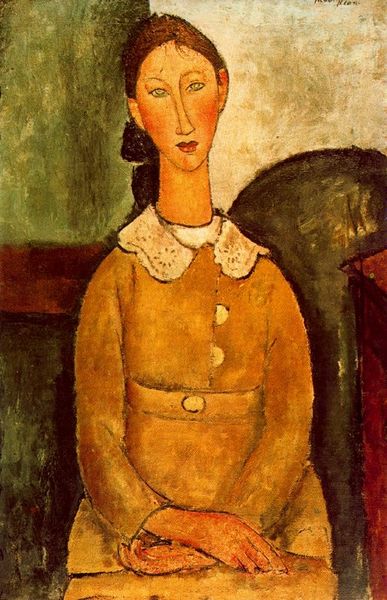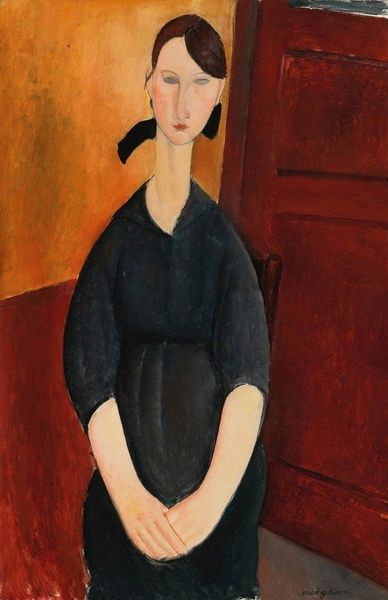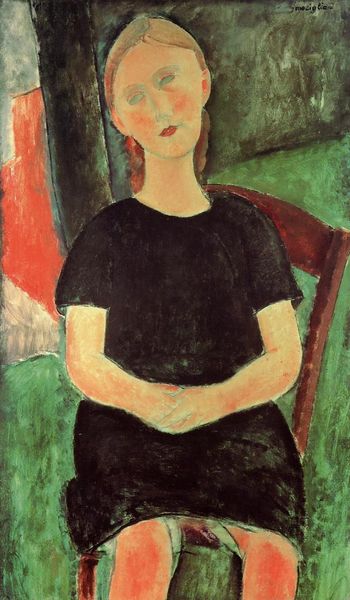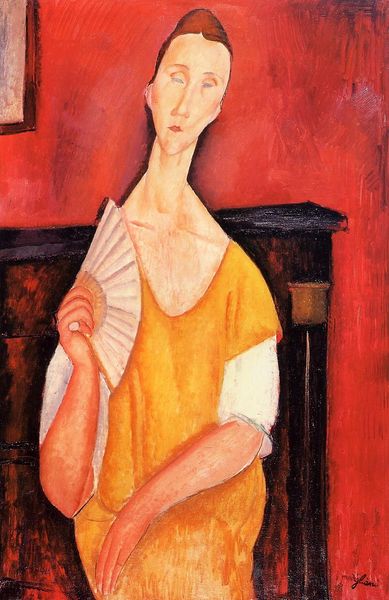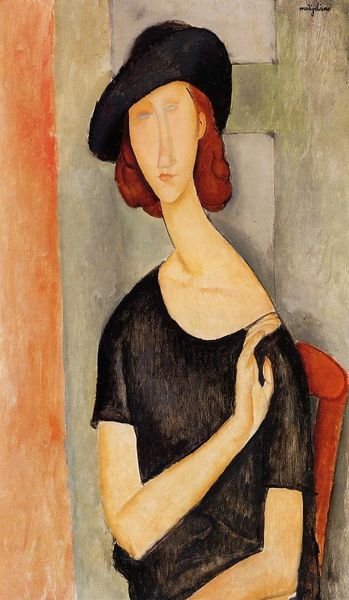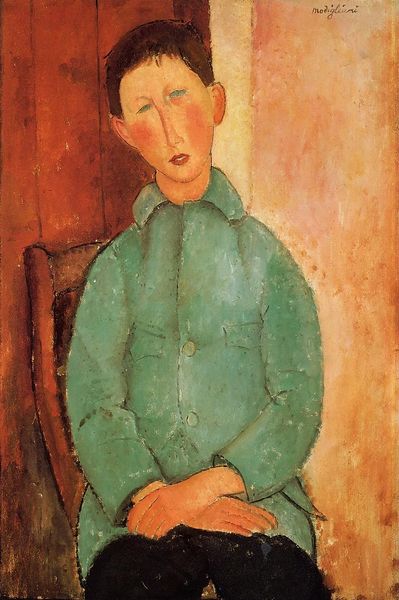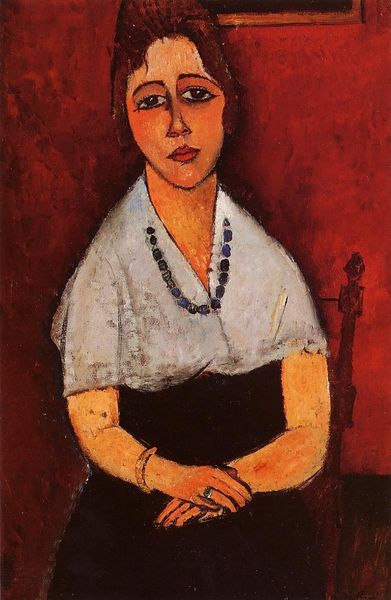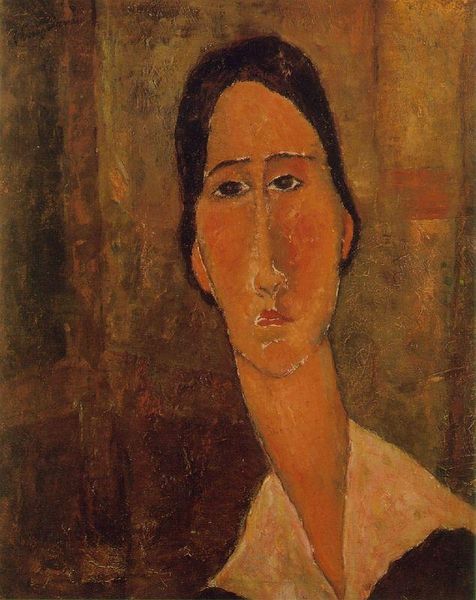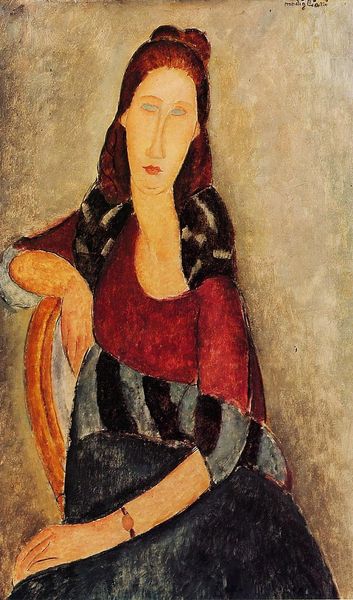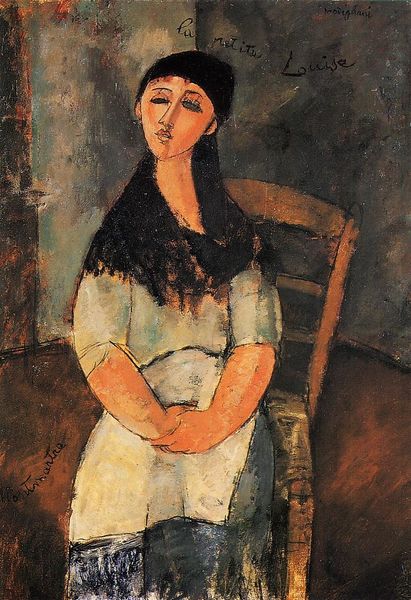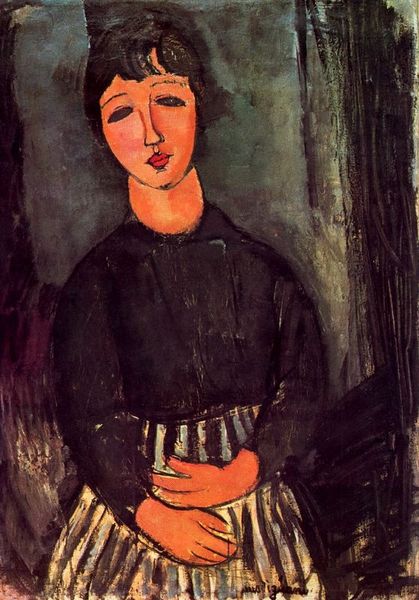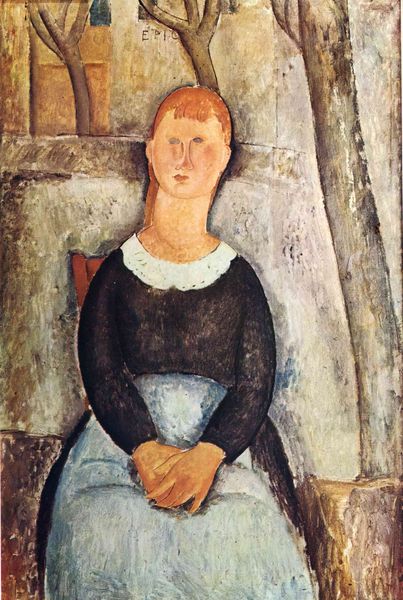
oil-paint, impasto
#
portrait
#
oil-paint
#
figuration
#
oil painting
#
impasto
#
italian-renaissance
Dimensions: 105.2 x 72.7 cm
Copyright: Public domain
Curator: The elongated, almost ethereal quality of Modigliani's "Girl with a polka-dot blouse," created around 1919 and now residing at the Barnes Foundation, immediately strikes me. It’s hauntingly beautiful. Editor: I find it striking too. Given the date, I wonder what specific textile production methods were in play. Did that particular shade of pink for the skirt arise from newly developed dyes or was it something more established in dressmaking traditions? Curator: Good question. Thinking more broadly, it’s key to situate Modigliani within the artistic milieu of Paris in the early 20th century. We often present this piece through a very aestheticized lens, focusing on his "unique" style and idealized faces, which seems to downplay the realities that framed its reception. Editor: Exactly. The social and institutional pressures he faced while moving through the art market surely influenced his choices. How were dealers and collectors responding to figuration at this point, especially works like this oil painting which are figurative but stylistically abstracted? Curator: One could consider that the simplification of form, typical in Modigliani's oeuvre, enabled him to quickly produce canvases, aligning with market demands for readily consumable art objects. Was the lack of intense detail simply expedience dictated by economics? Editor: I would certainly wager it’s more nuanced than pure expedience. Modigliani's background – particularly his exposure to early Renaissance art and his later interactions with Brancusi’s sculptures – seem vital to consider. Curator: And that's precisely where situating the art object within institutional and intellectual debates becomes important. Museums tend to present Modigliani’s subjects almost as anonymous figures when they are the product of specific art worlds. Did those individuals, and the clothes they wear, embody specific social or cultural identities? What was the socio-political symbolism of polka dots? Editor: These are really pressing issues that deserve much greater attention. Curator: Ultimately, exploring these social dimensions in his "Girl with a polka-dot blouse" expands our interpretation far beyond simply seeing a stylized portrait. Editor: I agree. It urges us to interrogate what constitutes artistic "genius" by highlighting production as both the act of the artist and the system of culture surrounding them.
Comments
No comments
Be the first to comment and join the conversation on the ultimate creative platform.
